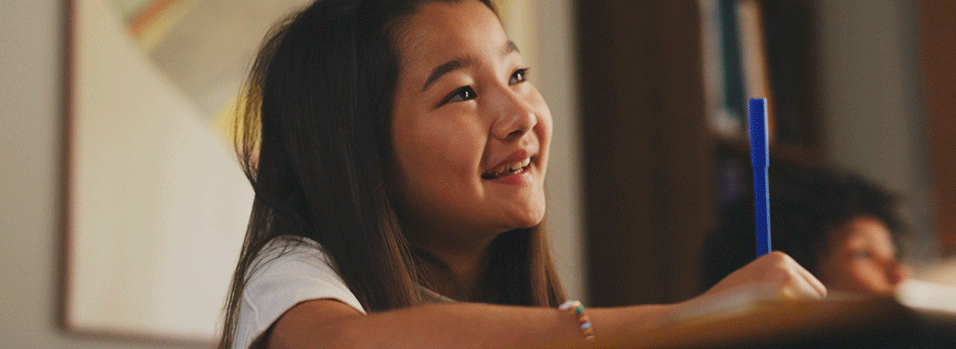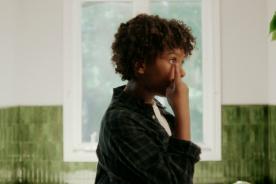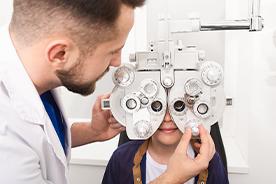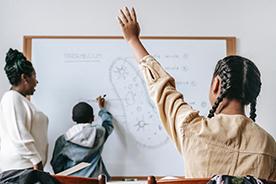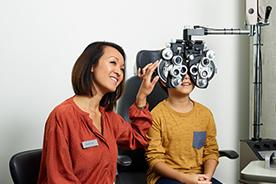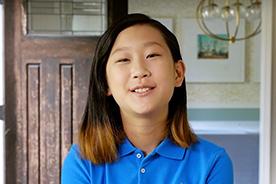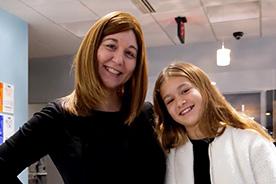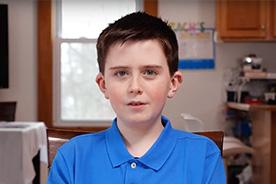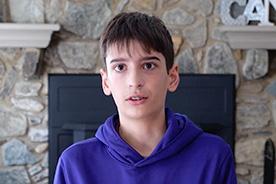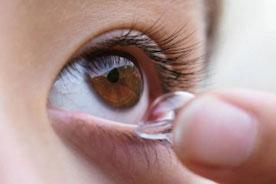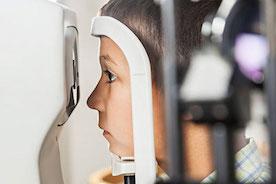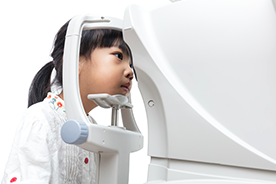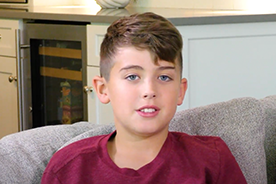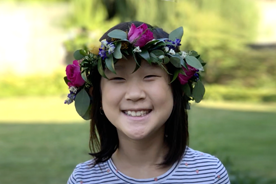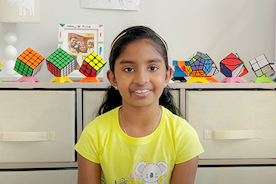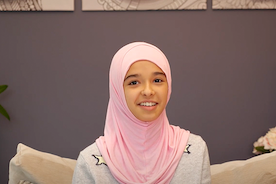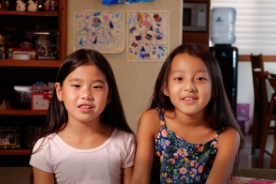Know the Signs of Myopia
Is your child having trouble seeing the board in school, squinting when looking at distant objects, or experiencing blurred vision or headaches? These could be signs of myopia, also known as nearsightedness, which often first appears in school-age children and progresses until about age 20. In fact, a recent study showed a 41% prevalence of myopia in children ages 5-19 years old†2, due in part to changing lifestyles and less time outdoors.3-5
Since myopia makes faraway objects appear blurry, children may have more difficulty participating in sports, school, and other daily activities.6,7 Without myopia management, their worsening condition often results in increased dependence on glasses or contact lenses for everyday tasks.6,7
This is crucial because slowing the rapid progression of myopia is just as important as correcting vision itself.8Until recently, the myopia diagnosis often meant an ongoing need for progressively stronger glasses as the child’s vision worsened with age. However, advancements in vision care now offer solutions not just to clear vision, but also to help slow down myopia progression. This is crucial because slowing the rapid progression of myopia is just as important as correcting vision itself.8
Treating for the Short Term and Long Run
When your child is diagnosed with a medical condition, immediate treatment is essential to help prevent it from worsening. The same urgency should be applied to addressing nearsightedness in age-appropriate children.
The immediate obstacles pale in comparison to the increasing problems myopia can cause later in life, like glaucoma, retinal detachment or early development of cataracts.9-12 Early treatment is mission critical: addressing myopia at the onset can slow its progression and help protect a child’s myopia levels from getting worse later in life.*‡§1,13 That’s why the steps you take today are important.
Not all parents are familiar with myopia—only 53% of parents can define the term,¶15 but if you’re reading this, you aren’t one of them! Once you better understand the condition, you can arm yourself with knowledge about what you can do for your child. Once myopia gets worse, you cannot go back.
How to Help Keep Myopia From Getting Worse
The good news is, there are ways to help slow the progression of myopia—in addition to helping your child see clearly. Eye care professionals recommend spending more time outdoors, reducing screen time, and modifying how close kids are to their screens.14
Dr. Justin Kwan, OD, FAAO, Senior Manager of Myopia Management at CooperVision, recommends taking children on errands and to the park to help reduce the risk of developing myopia. Even in that short time, they’ll be outside a little more than they would be otherwise.
When it comes to clearing up blurry vision and helping to control your child’s nearsightedness, it’s also important to choose the right products. Standard glasses will only correct your child’s vision, not slow the progression of myopia. Early intervention with myopia management disrupts that process, in a good way! That’s why 92% of eye care professionals agree it’s important to address children’s eye conditions and slow myopia progression at an early age—ideally before they turn 10.15
Your Child Has Myopia—Now What?
Learn about myopia online at MiSight.com and make an appointment with a MiSight® 1 day* eye doctor who can offer myopia management treatments for your age-appropriate child.
Your doctor can recommend products that fit into your child’s life. Traditional glasses and contact lenses in the U.S. were developed only to correct blurred vision. That all changed with the introduction of MiSight® 1 day contact lenses. These daily wear single-use contact lenses are the first and only FDA-approved* product to slow the progression of myopia in children aged 8-12 years old at the initiation of treatment.|1
It's no surprise that 97% eye care professionals that prescribe MiSight® 1 day agree fitting age-appropriate children with myopia in MiSight® 1 day contact lenses will have a positive impact on their patient’s long-term vision health.¶16 In a 3 year study, over 90% of parents whose age-appropriate children were wearing MiSight® 1 day also rated their child ‘happy’ with the overall experience of wearing contact lenses.**17 And maybe most importantly, 9 out of 10 of age-appropriate children expressed a strong preference for MiSight® 1 day over their glasses after 3 years of wear.18
Ready to take the next step? Learn more about myopia and find a MiSight® 1 day eye doctor near you at MiSight.com.

